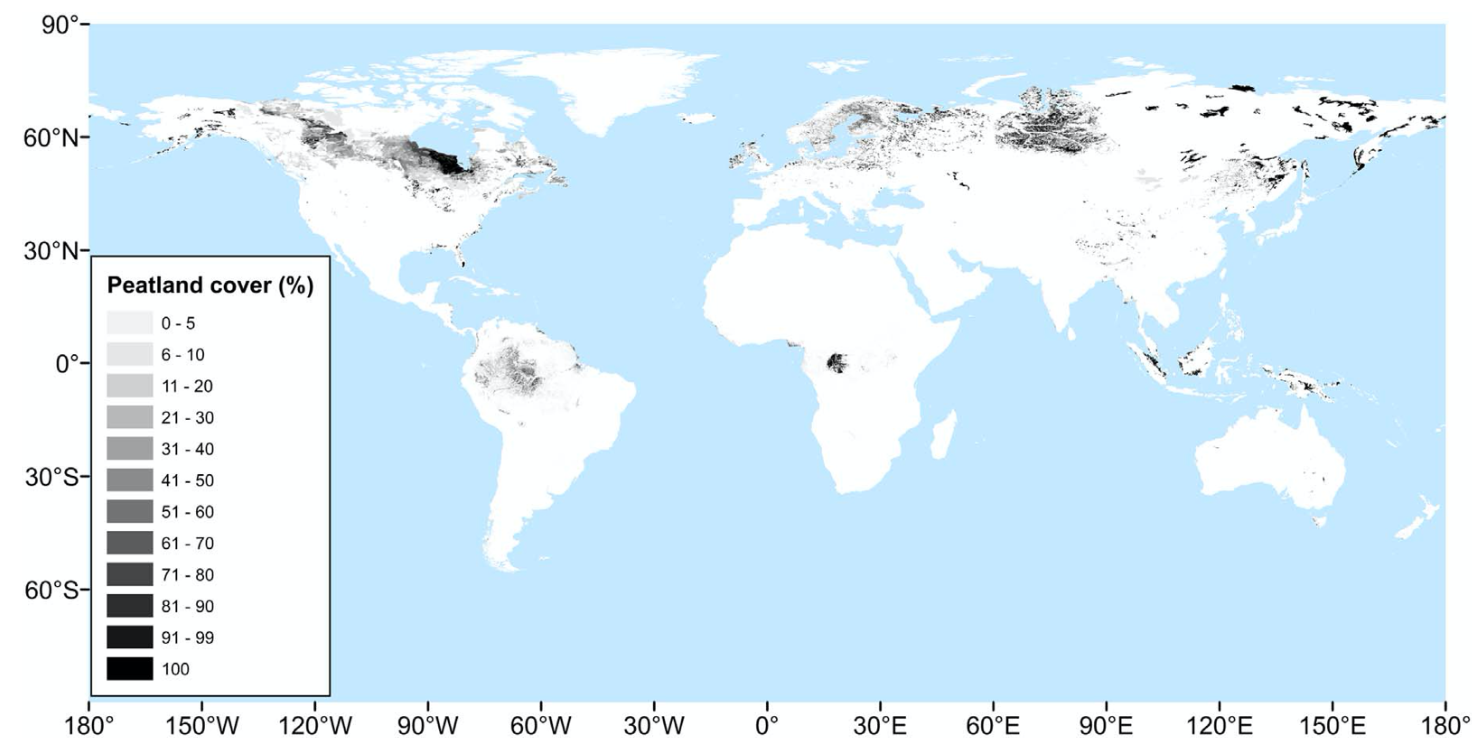Peatlands occur in every climatic zone and, according to Xu et al. (2018), the total area globally is around 4.23 million km2, which corresponds 2.83% of the Earth’s land surface. The distribution of peatlands globally follows that of wetlands generally.


According to Xu et al. (2018), the majority of the worlds peatlands are situated in Asia (38.4%) and North America (31.6%, mostly Canada & Alaska). European peatlands make up 12.5%, followed by South America (11.5%), Africa (4.4%), and Australasia and Oceania (1.6%). Estimated peatland area accounts for 5.42% of terrestrial area of North America, followed by Europe (5.2%), Asia (3.6%), South America (2.7%), Australasia and Oceania (0.9%), and Africa (0.6%). In some parts of the amazon in South America more than 10% of the areas are covered with peatlands (Joosten & Clarke 2002).
Peatlands in boreal and temperate parts of the Northern Hemisphere (Europe, North America, Russia) have formed under high precipitation-low temperature climatic regimes. In the humid tropics, however, regional environmental and topographic conditions enable peat to form under conditions of high precipitation and high temperature (Andriesse, 1988; Page et al., 1999) in Southeast Asia, mainland East Asia, the Caribbean, Central America, South America, Africa, parts of Australasia and a few Pacific Islands (Page et al., 2011). Most tropical peatlands are located at low altitudes where rain forest vegetation grows on a thick layer of organic matter although some are found in upland or mountainous areas where peat can exceed 30 m (Pajunen 1985).
Further reading
Andriesse, J. (1988) Nature and Management of Tropical Peat Soils. Food and Agriculture Organization (FAO) of United Nations, Rome.
Joosten, H. & Clarke, D. 2002: Wise Use of Mires and Peatlands: Background and principles including a framework for decision making. IMCG/IPS
Lappalainen, Global Peat Resources, IPS 1996
Page et al. 1999. Interdependence of peat and vegetation in a tropical peat swamp forest. Phil. Trans. R. Soc. Lond. B (1999) 354, 1885-1897
Page, S. et al. 2011. Global and regional importance of the tropical peatland carbon pool. Global Change Biology.
Pajunen, H., 1985. The mires in the Akanyaru Valley in Burundi. Proceedings of the Symposium: Tropical Peat Resources – Prospects and Potential. February 25–March 1, 1985, Kingston, Jamaica. pp. 186–197. International Peat Society, Helsinki, Finland.
